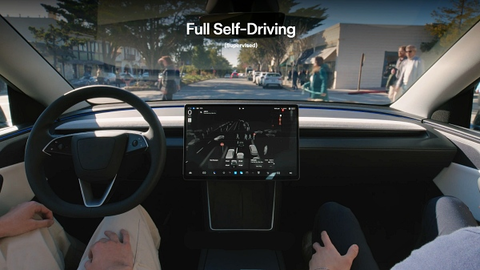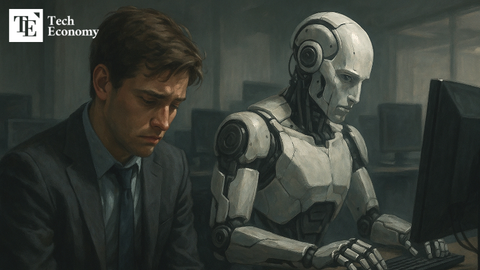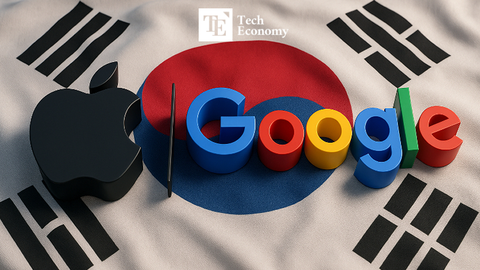Back to BASIC: Bill Gates Releases the Code That Sparked Microsoft’s Revolution
Input
Changed
Bill Gates Reflects on the Code That Started It All The Tech Community’s Reaction to the Code Release What an Enthusiast-Turned-Computer Scientist Thinks

Bill Gates Reflects on the Code That Started It All
In a world dominated by constant innovation and the next big thing in technology, it’s rare for leaders of tech giants to look back. But that’s exactly what Bill Gates, the co-founder of Microsoft, has done with pride as he unearths the original source code he and Paul Allen wrote 50 years ago. In celebration of Microsoft’s 50th anniversary, Gates has shared the first operating system they created, Altair BASIC, with the world. It’s a bold move by a tech titan, and perhaps a rare opportunity for tech enthusiasts and computer scientists alike to see the roots of what has now become one of the largest and most influential companies in the world.
Given its significance in the history of computing, it’s no surprise that Gates would take this moment to revisit the past. The Altair BASIC operating system, originally written for the Altair 8800 microcomputer, is where it all began for Gates and Allen. This early work set the stage for the creation of Microsoft, which has since revolutionized the way we use technology. Sharing this code might seem like a nostalgic trip down memory lane, but it also represents a statement about the power of open access to knowledge and the timeless importance of early computing history. For those who were around when it all started, and for a new generation of tech enthusiasts, it’s a chance to connect with a pivotal moment in tech history.
When Bill Gates first announced the release of Altair BASIC, he expressed a sense of pride and nostalgia. In a blog post on his website, Gates highlighted how the code was written in a time when resources were scarce, and computing was still in its infancy. In his words, “It’s amazing to look back at how far we’ve come. Fifty years ago, Paul Allen and I wrote this code on paper before translating it into machine code. We didn’t even have a keyboard; we had to work directly with the machine’s binary system.”
Gates shared his excitement about the code’s historical significance, noting that the operating system represented more than just the beginning of Microsoft—it was the dawn of personal computing. At the time, the Altair 8800 was revolutionary, and so too was BASIC (Beginner’s All-purpose Symbolic Instruction Code), the programming language they created for it. As he looked back at their early work, Gates marveled at how a single piece of software could have such a profound impact on the world. The humble beginnings of Altair BASIC were the first steps toward building an empire that would eventually touch billions of people worldwide. For Gates, the act of revisiting and releasing the code wasn’t just about celebrating a milestone—it was about giving others a chance to witness the birth of something larger than anyone could have anticipated at the time.
In many ways, Gates’ decision to release the code is an acknowledgment of how far the tech industry has come and how foundational these early tools were to the development of software that powers modern-day applications. While the Altair BASIC code might seem primitive by today’s standards, it was groundbreaking in its time, representing a breakthrough in computing for hobbyists, students, and early developers. Gates’ reflection on the code demonstrates the sense of pride he still feels for the work he and Allen accomplished in their youth. It’s a moment for Gates to not only celebrate his legacy but to remind the world of the small steps that led to Microsoft’s global success.

The Tech Community’s Reaction to the Code Release
Gates’ decision to make Altair BASIC available for download has generated a lot of buzz in the tech world. Industry leaders, developers, and enthusiasts alike are reacting to this historic release with excitement and curiosity. Many see it as an unprecedented opportunity to explore the roots of personal computing and gain insight into the mind of one of the most influential figures in technology.
According to reactions in major media outlets, there is a mix of awe and nostalgia as people dig into the code. “It’s a time capsule,” said one developer, commenting on the excitement surrounding the release. “To think that this code from 50 years ago was a fundamental part of what we use every day is mind-blowing. It’s not just about nostalgia; it’s about understanding where it all started.” Others have expressed their admiration for the simplicity and elegance of the code, noting how it’s a testament to the ingenuity of Gates and Allen. Even though the programming techniques used in the 1970s might seem archaic compared to modern development environments, there’s a certain brilliance in the way the two programmers were able to make the most out of limited resources.
In addition to the nostalgia, there is a sense of gratitude from the tech community for Gates’ generosity in sharing this historic code. The decision to make it available for anyone to download opens the door for future generations to appreciate the roots of computing. Some enthusiasts have already begun to experiment with the code, seeing it as an opportunity to learn from the past and perhaps even use it as a stepping stone to understand more complex concepts in programming.
The release of Altair BASIC has sparked discussions about the importance of preserving historical software and sharing it with the public. “It’s like discovering a treasure chest of knowledge that has been hidden for decades,” said one commenter on a technology forum. “For those of us who grew up in the early days of personal computing, this is a reminder of how far we’ve come, and how we should never forget the foundations of what we’ve built.” In a world where technology evolves at a rapid pace, having access to such early examples of programming is invaluable for both historical understanding and technical education.

What an Enthusiast-Turned-Computer Scientist Thinks
For some, the release of Altair BASIC is more than just a fun historical artifact—it’s a reminder of the impact this early software had on the growth of personal computing. One enthusiast turned computer scientist shared their experience in a recent interview, describing how the Altair 8800 and its BASIC language were pivotal in propelling them into the world of computing.
As a young person, they recall, “I remember getting my hands on a version of the Altair BASIC code when I was in high school. It opened up a whole new world of possibilities for me. It wasn’t just about learning how to write code; it was about understanding the power of computers to change the world.” This individual credits Altair BASIC for sparking their lifelong passion for technology and programming. It was the simplicity of the language that allowed them to learn quickly and build small programs, which ultimately led to a career in computer science. For them, Altair BASIC wasn’t just a piece of history—it was the first step in a personal journey that would lead to their involvement in the tech revolution.
In their opinion, the release of the original code is a testament to Gates’ understanding of how important it is to inspire the next generation of innovators. By sharing this piece of history, Gates is offering young people a window into the early days of personal computing and giving them a tangible connection to the people and technologies that shaped the modern world. This is a perfect example of how technology can have a ripple effect, inspiring people across generations to get involved and push the boundaries of what’s possible.
For those of us who never had the opportunity to experience the early days of personal computing, the release of Altair BASIC provides a unique opportunity to engage with the past and better understand the roots of the digital world we now take for granted. It’s a chance to look at the raw beginnings of Microsoft and realize just how much effort and innovation went into creating the tools we now use every day.
Conclusion: A Proud Moment for a Tech Titan
Bill Gates’ decision to share the code that started it all is a powerful statement about the importance of reflection and connection to the past. By releasing Altair BASIC, he’s offering a glimpse into the origins of Microsoft and the early days of personal computing. It’s a bold move that shows just how far Gates has come since his humble beginnings, but also how much he values the history of technology.
For the tech community, it’s an opportunity to celebrate the roots of modern computing and to learn from the simplicity and ingenuity of the early software that laid the foundation for everything that followed. And for those who are just beginning their journey into the world of technology, it’s a reminder that even the most successful tech giants started small—and that their work can inspire future generations to make their own mark on the world.
The Altair BASIC code is more than just an old relic—it’s a living testament to the transformative power of technology and the incredible journey that began with a simple idea 50 years ago.





















